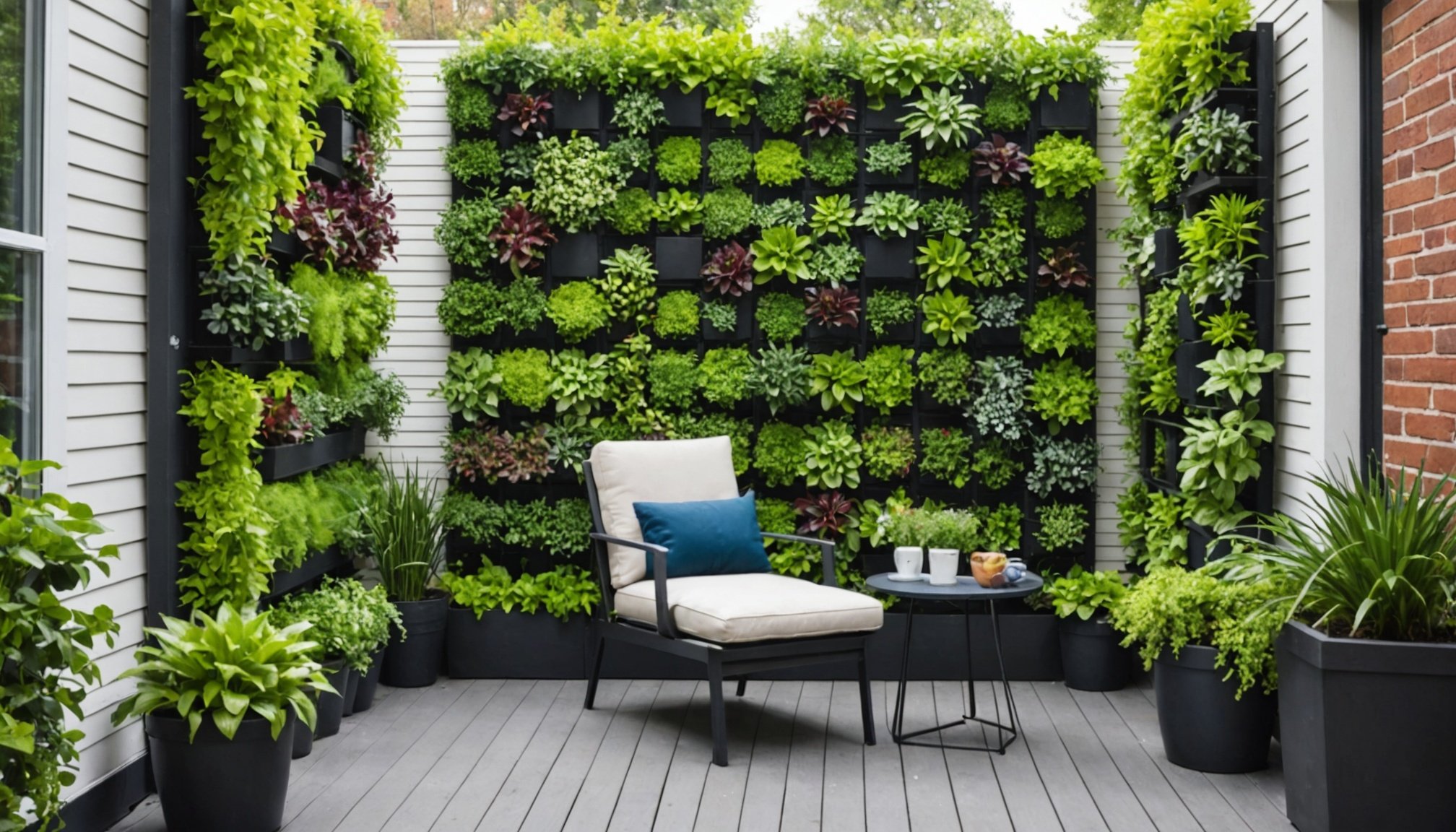In urban environments, where outdoor space is often limited, growing a garden can seem like a daunting task. However, with the rise of vertical gardening, cultivating thriving green spaces in small areas has become an accessible reality. Vertical gardens, also known as living walls, transform bare walls into lush, vibrant displays of nature. They maximize space and offer aesthetic appeal, all while contributing to a healthier environment by improving air quality and promoting biodiversity.
This comprehensive guide will walk you through the essential steps to create your own vertical garden in a small outdoor area. From understanding the benefits to exploring various design ideas, you’ll find everything you need to embark on your vertical gardening journey.
Additional reading : How do I start a compost bin at home and what can I include?
Understanding Vertical Gardens and Their Benefits
Vertical gardens are an innovative approach to traditional gardening. Unlike horizontal gardens, they involve growing plants on an upright structure, making them ideal for small outdoor spaces. By utilizing walls, fences, or specially designed frames, you can cultivate a diverse array of plants without consuming valuable ground area.
Environmental and Aesthetic Advantages
Vertical gardens offer several benefits beyond space efficiency. They provide insulation, reducing energy costs by protecting buildings from extreme temperatures and acting as a natural barrier against noise. Additionally, they improve air quality by filtering pollutants and releasing oxygen, making your environment healthier.
Also to discover : What are the best companion plants for tomatoes to improve growth and flavor?
Biodiversity Through Layers
By incorporating numerous planters, you create multiple layers of growing environments. This diversity ensures that different species of plants can thrive together, promoting biodiversity in your garden. You can choose from a variety of plants that are suitable for vertical settings, such as herbs, succulents, and vines.
Urban Appeal and Personal Expression
Vertical gardens are not just functional; they are also aesthetically pleasing. They transform bland walls into living works of art, allowing for personal expression through creative design. Whether you prefer a minimalist or lush look, your vertical garden will be a reflection of your style and creativity.
As you contemplate starting your vertical garden, consider the dual benefits of enhancing your space and contributing to environmental well-being.
Choosing the Right Structure and Plants
The cornerstone of a successful vertical garden lies in selecting the appropriate structure and plants that will thrive in your specific environment. With numerous options available, you can tailor your design to suit both your aesthetic preferences and the functional needs of your garden.
Selecting the Framework
The structure of a vertical garden can vary from simple trellises and planters to more complex systems like hydroponic walls. The choice depends on your space, budget, and the types of plants you wish to grow. DIY enthusiasts can craft their own planters from repurposed materials, while those seeking convenience might opt for modular pre-made systems.
Choosing Plant Varieties
A key consideration in vertical gardening is the selection of plants. Climbers and vines like ivy and jasmine are natural choices for living walls due to their upward growth. However, many other plants can be integrated into your design. Succulents and ferns are ideal for low-maintenance setups, while herbs such as basil and mint offer culinary benefits.
Soil and Nutrient Needs
When planning your vertical garden, consider the soil and nutrient requirements of your chosen plants. Lightweight potting mixes are best to reduce strain on your structure. Incorporating slow-release fertilizers can ensure sustained growth throughout the seasons.
By carefully selecting the right plants and structure, your vertical garden will not only survive but thrive, creating a lush, green sanctuary in your limited outdoor area.
Installation and Maintenance Tips
Installing a vertical garden requires careful planning and execution to ensure it becomes a lasting feature in your outdoor area. A well-installed garden will flourish, requiring less maintenance and offering years of enjoyment.
Setting Up Your Structure
Begin by evaluating the weight-bearing capacity of the wall or fence where your garden will be installed. Securely attach your chosen framework, ensuring it can support the plants, soil, and water. If constructing a DIY frame, consider using durable materials to resist wear from weather conditions.
Planting Techniques
Once your structure is in place, it’s time to start planting. Arrange your plants strategically, placing taller plants at the top to prevent them from shading shorter ones. Ensure each plant is securely anchored in its planter to avoid movement, which can damage roots.
Watering and Fertilization
Vertical gardens require a consistent watering regimen, as gravity can cause water to drain quickly. Implement drip irrigation or self-watering systems to keep your plants hydrated. Fertilize regularly with water-soluble nutrients to sustain healthy growth.
Regular Maintenance
Maintaining your vertical garden involves routine checks for pests, disease, and structural integrity. Prune regularly to encourage new growth and remove any dead or diseased foliage. By staying vigilant, you can ensure your vertical garden remains a vibrant addition to your outdoor space.
With these installation and maintenance tips, your vertical garden will become a sustainable, living feature in your small outdoor area.
Creative Design Ideas for Vertical Gardens
Designing a vertical garden offers a chance to unleash your creativity and personal style. Numerous ideas exist to customize your living wall, making it a unique focal point in your outdoor area.
Themed Plant Displays
Consider organizing your garden by themes. A herb wall, for example, can provide fresh ingredients for cooking, while a succulent garden offers a low-maintenance option with stunning visual appeal.
Mixed Media Walls
Incorporate different materials such as stones, wood, and metals alongside your plants to create a living tapestry. This approach adds texture and depth, turning your garden into a dynamic piece of art.
Seasonal Rotations
To keep your garden fresh throughout the year, change plants seasonally. Use spring flowers, summer herbs, autumn foliage, and winter evergreens to maintain interest and beauty.
Utilizing Upcycled Materials
For an eco-friendly option, consider DIY projects that repurpose items like old ladders, pallets, or shutters into planters. Not only is this sustainable, but it also adds rustic charm to your garden.
Through these creative ideas, your vertical garden can become a reflection of your personality and a testament to your ingenuity, enhancing your outdoor space in a meaningful way.
Creating a vertical garden in a small outdoor area is a rewarding endeavor that offers both functional and aesthetic benefits. With careful planning, selection of the right plants and structures, and consistent maintenance, you can transform an ordinary wall into a lush, living paradise that not only enhances your surroundings but also contributes positively to the environment.
By embracing innovative ideas and techniques, your vertical garden will become a testament to your resourcefulness and love for nature. So, as you embark on this green journey, remember that every small space holds the potential for grandeur. With creativity and dedication, your vertical garden will thrive, offering a sanctuary of growth and beauty in a bustling urban world.











